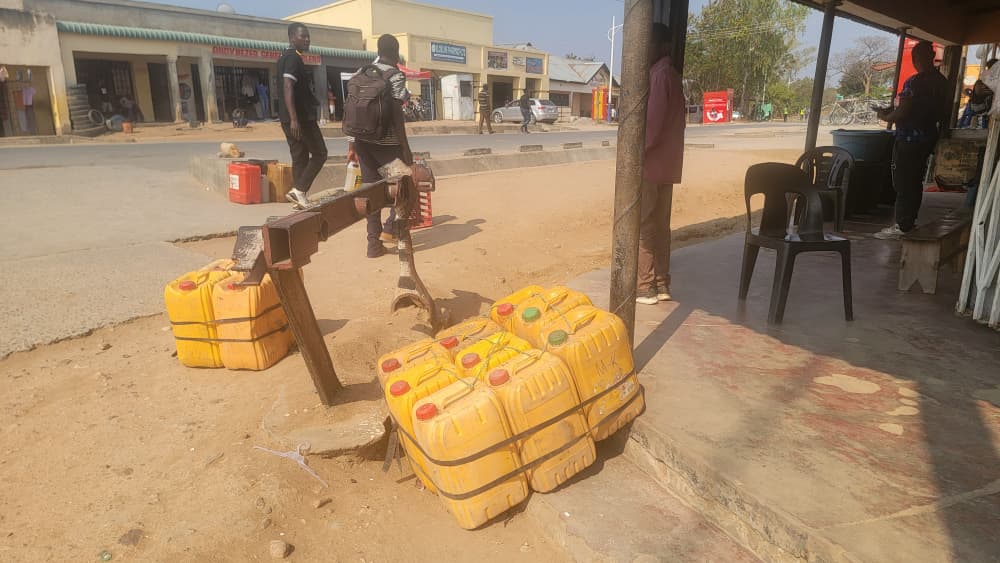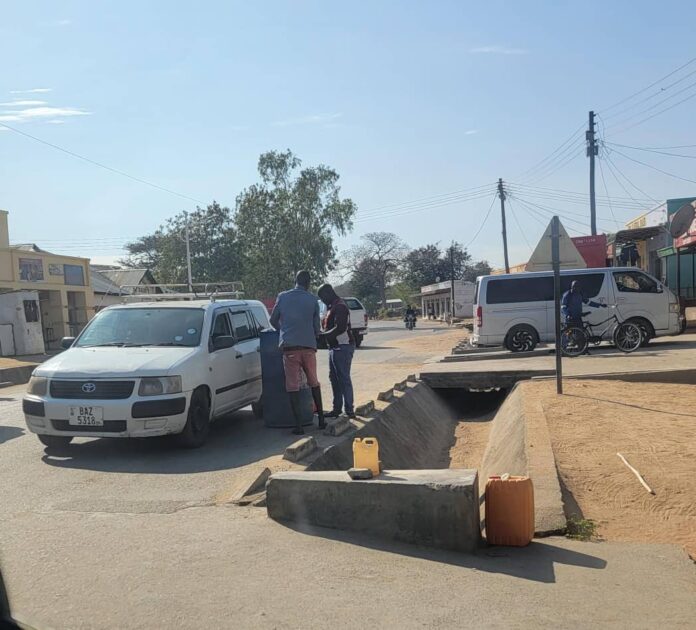Chama, the largest district in Eastern Province, is hard to access due to poor roads. It has only one bank, no mobile network operators, and critically, no official fueling station. According to Chama district council’s website, it covers about 17,630 km² — more land than any other district in the province.
By Ennety Munshya
The absence of a licenced fueling station in Chama District, Eastern Province, has forced residents to rely entirely on informal, black-market fuel vendors for both transport and business needs.
Fuel is sold in 20-liter containers by street vendors who source it mainly from neighboring Malawi, where it is cheaper, or from Lundazi town. Prices fluctuate sharply—ranging from K60 to K90 for 2.5 liters, and soaring to as much as K150 during shortages.
Despite being home to more than 140,000 people, according to the 2022 census, Chama remains one of the most isolated districts in the province. Poor infrastructure continues to hinder access, with most roads unpaved and often impassable in the rainy season. The district is linked to the rest of the country by just two main routes, the Chipata–Lundazi–Chama Road and the Chama–Matumbo Road.
A recent visit by a MakanDay team found that, while a few streets in the central business district are tarred, basic facilities remain scarce. Residents say many businesses shun the area, citing its lack of economic viability.
On the streets, yellow 20-liter containers have become a familiar sight, symbols of the thriving black-market fuel trade. For many families, vending has proved profitable, with some vendors saying it has enabled them to pay school fees and meet other household needs.
But for taxi and motorbike operators, survival is more difficult. They contend with unstable prices, high costs, and unreliable fuel quality. Some vendors reportedly sell changanya, fuel adulterated with water or paraffin, that damages engines and further squeezes already thin livelihoods.
One fuel vendor, Zebron Botha, who has been in the trade since 2001, explained that supplies are sourced both locally and across the border in Malawi, though mostly from Malawi where fuel is significantly cheaper than in Zambia.
According to Botha, a 2.5-liter container of diesel sells for between K60 and K75, depending on the vendor. Petrol costs slightly more, ranging from K75 to K90. But when supply runs low, prices spike, with the same 2.5 liters selling for as much as K150.
“We buy the fuel in drums and start reselling. It is cheaper to order from Malawi than locally. Locally, fuel is expensive, so if we order at an expensive price we also have to hike the price for us to make something out of it,” he explained.
Botha adds that vendors face their own challenges, particularly in the rainy season when poor roads drive up transport costs.
Another vendor, who requested anonymity, said he has been in the trade for nearly 24 years. He described fuel vending in Chama as highly lucrative, largely because the district has no licensed fueling station.
From the business, he has managed to educate his children and support other family needs.
He explained that vendors source fuel from licensed service stations in Lundazi and, at times, from Malawi.
“It depends on where it is cheap. Sometimes we buy from Malawi and sometimes locally in Lundazi. Availability of the fuel also matters and determines the price at which we resell it,” he says.
Elijah Ng’uni, a taxi driver in Chama, described the fuel situation as a major challenge, saying vendors always add a profit margin.
“It’s not easy to balance operations and cash in because fuel prices are unstable and keep fluctuating,” he said, adding that quality is also a concern due to poor storage.
“We need a licensed fueling station here. Even when government reduces prices, we don’t benefit because vendors still want to make profits. Running a taxi business has become too expensive—the costs are just too high.”
Peter Banda, a motorbike rider, echoed the concern, noting that unstable fuel prices disrupt their businesses.
“When vendors hike prices, we are forced to raise fares just to survive, but clients don’t understand when we increase fares. We really need a fueling station,” he said.
Banda added that adulterated fuel, known locally as changanya, is another threat.
“Sometimes they mix fuel with water or paraffin and sell it to us. Our bikes and vehicles are getting damaged,” he complained.


Discover more from MAKANDAY
Subscribe to get the latest posts sent to your email.



